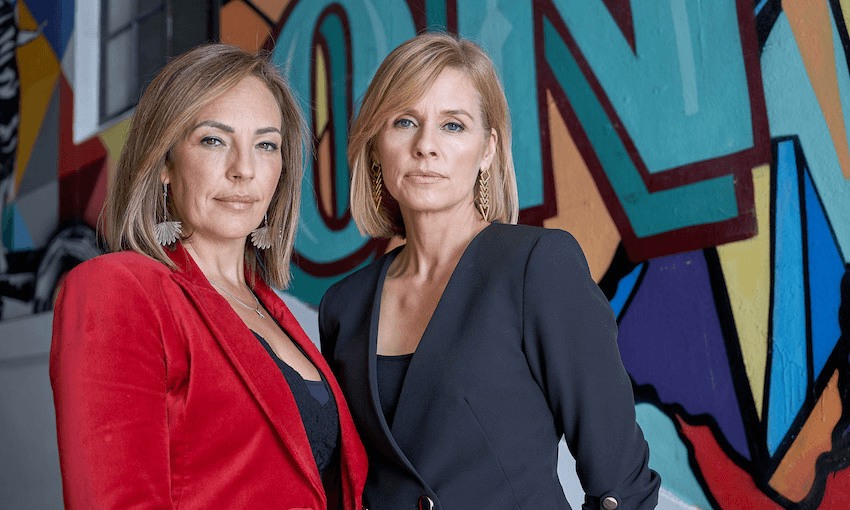The proposal to ‘rationalise’ Māori media into a single news service is regressive and will further marginalise the Māori voice, writes journalist Mihingarangi Forbes.
Those of us who live and work in te ao Māori have clocked up more than a few hours on wooden bench seats on windswept marae, pulling our coats close and hanging on every word, every thrust and parry of argument, as speakers duel in the realm of Tūmatauenga.
When it’s done well, whaikōrero on the marae takes an issue and examines it from all sides. Each speaker builds on the speech before. Watching a great kaikōrero at work is a masterclass in listening and critiquing, adding in lived experience, citing history in support, holding the idea up for those on the ātea to examine from all sides, to see the light shine through it and reveal any flaws in it. The supporting waiata confirms the strength of support for the speech or, in some instances, cuts it short if the aunties decree that the kaikōrero has strayed from the path of truth into “fake news”. Each element adds to the experience, enlightening all who have the privilege to be there.
The suggestion that there would only be one kaikōrero beggars belief.
In essence, that is what the minister of Māori development Nanaia Mahuta is proposing with her plan to “rationalise” Māori news to the point that Māori Television becomes the single Māori news service. No Te Karere, no Marae, no Waatea, no The Hui. One kaikōrero, one voice, a solitary speaker to tell the story.
Finance minister Grant Robertson has spoken about the need for a “plurality” of voices in New Zealand media. In the midst of a global recession, he’s found tens of millions of taxpayer dollars to ensure tauiwi have options when it comes to news and current affairs. Having successfully ensured the mainstream media choir is in full voice, the government is now proposing garrotting Māori journalism in favour of Māori Television performing solo.
This rationalisation of Māori news is simply taking from Pita to prop up Paora.
Unlike Pākehā media with its decades of state funding, resourced platforms, and mass audiences, Māori media has creatively survived on yearly funding contracts sourced through te reo Māori revitalisation money. It’s a flawed model which doesn’t allow for long-term planning or the ability to recruit and retain staff. It’s a mess, and it needs attention. But this is not the solution.
If the government wants to make a material difference to the size and quality of the Māori media sector, it needs to make a substantial investment in it. The kind of money that allows you to breathe, plan, and build in all aspects of Māori news – in te reo, in English, in mainstream media, in Māori Television, in iwi radio, in print, and online.
The minister’s suggestion to create a centre of excellence for journalism is well-meaning but lacks insight into our frail industry. Perhaps a creative solution is extending the trades training scheme to include Māori media craft. We’d certainly take on cadets at The Hui, and I know other organisations would welcome the opportunity to have subsidised Māori cadets in their workspaces. Cadets need experienced craftspeople and journalists with strong editorial skills to train them.
RNZ’s Māori cadetship programme is now in its fifth year and in May, the programme’s first cadet, Te Aniwa Hurihanganui, won Best Māori Journalist at the Voyager Awards. We desperately need to see well-trained journalists filtering through our industry and across multiple platforms.
There is no doubt that the media landscape is shifting and we all need to be prepared to move with it. But what the minister is proposing is regressive and will further marginalise the Māori voice rather than enhance it.
But perhaps its greatest deficiency is that it fails to take an audience-centric approach. In fact, it appears to fly in the face of what we know about Māori audience trends and how they consume content.
The late Professor Ranginui Walker once compared Māori journalism to a modern marae, a forum for debate where contentious issues could be blown about by the wind and shone on by the sun until the truth was exposed. But if no one is there to listen to the solitary orator, then the marae is no more than a field and a collection of empty buildings.
Our tūpuna had a saying for that…
He tangata takahi manuhiri, he marae puehu.
A person who disregards his visitors will soon find he has no visitors at all
A version of this article has also been published on Stuff.
